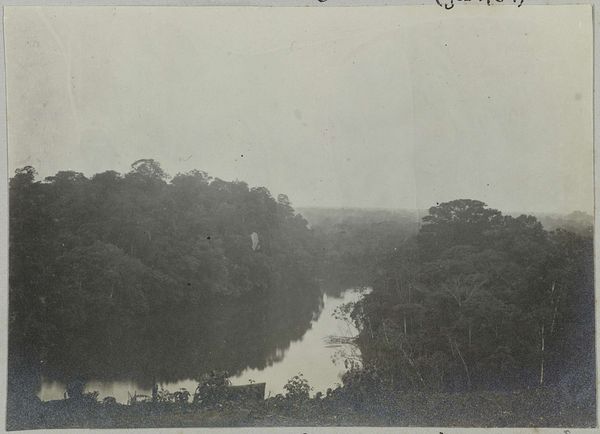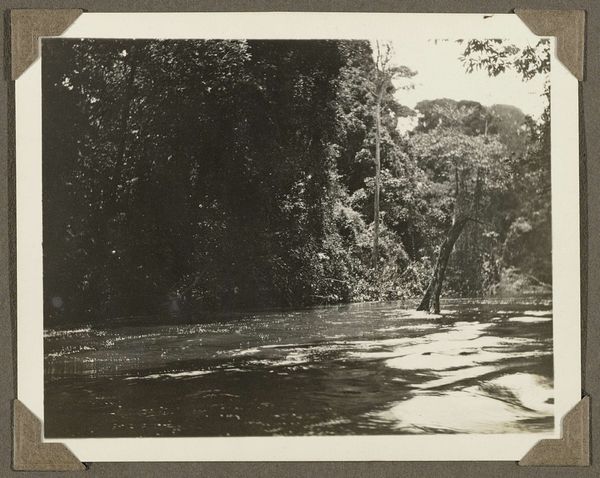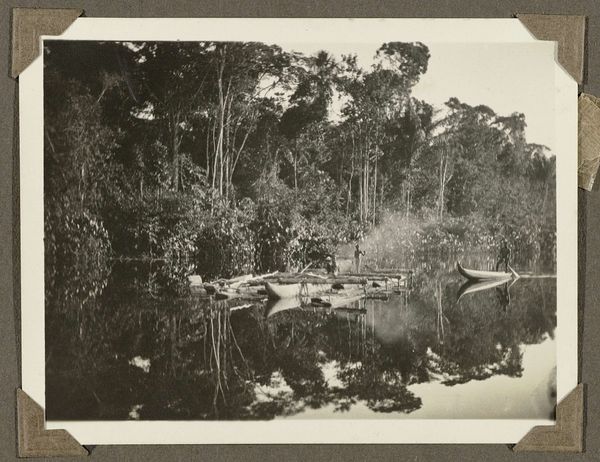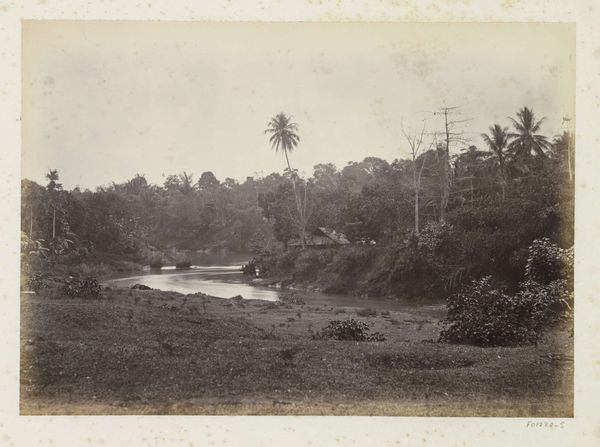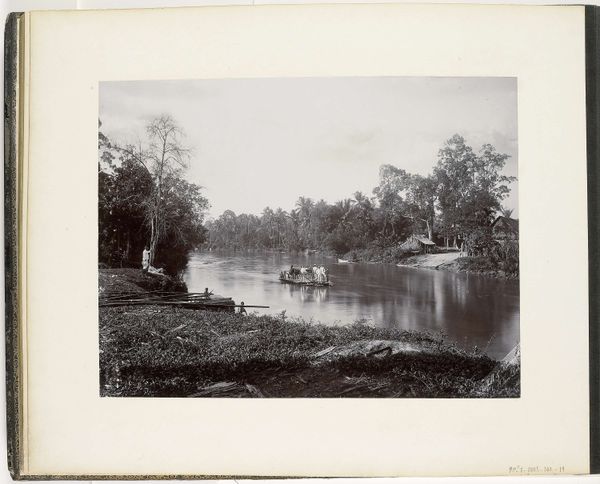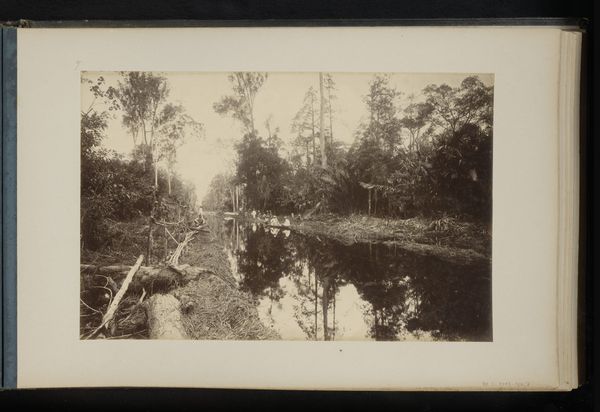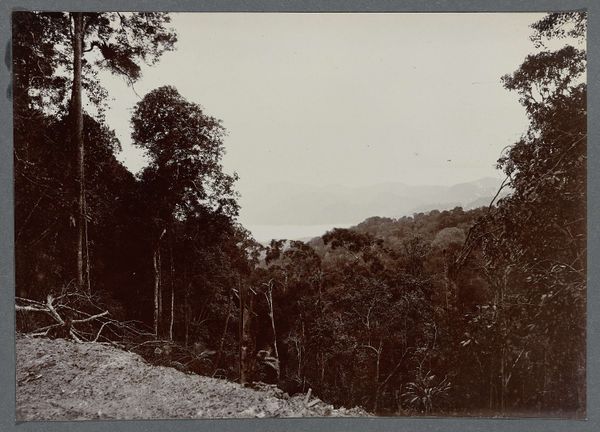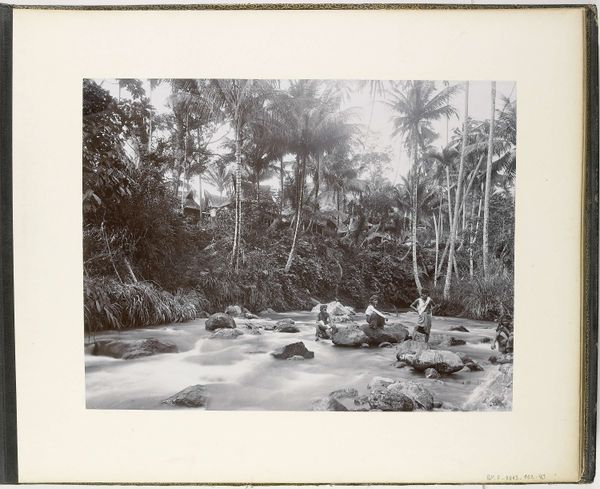
photography
#
landscape
#
river
#
street-photography
#
photography
Dimensions: height 81 mm, width 136 mm
Copyright: Rijks Museum: Open Domain
Curator: Before us, we have a vintage photograph titled "Water bij Deli-Toewa op Sumatra," created circa 1900 to 1920. It resides here in the Rijksmuseum. Editor: Wow, it feels so…still. That water is like a mirror, reflecting this dense, almost overwhelming jungle. It’s quiet, though, like the sounds are muffled somehow. Curator: The photographer is currently listed as anonymous, adding another layer of mystery to the image. Think about the cultural weight of that anonymity too! Editor: It totally changes the experience! I mean, is this person a visitor, a local, documenting? Is there commentary there? This feels more about place than person. And why are we looking at a landscape in the first place? What did land mean for people in 1900 in Indonesia? Curator: Photography at this time often represented an effort to classify and comprehend 'exotic' locations, frequently shaping Western perception. Note how this reflects cultural attitudes during colonial times. Editor: That colonial gaze—right! We get this flattened perspective on nature. All this foliage looks wild, but the photographic framing creates this controlled aesthetic that speaks to ideas about dominance over untamed landscapes. Even though there is stillness and beauty in the composition, those undertones definitely complicate things! I mean look how dense the plants are. Is that to overwhelm us? Is this Eden? Curator: The dark river becomes a potent symbolic conduit; notice its placement amidst all this vegetation. It makes me ponder about trade, transportation, the relationship between water, survival, and also the unknown depths that have no trails. Editor: That idea of unknown really nails it. This landscape has no people in it, at least that we can see. So it sort of asks the viewer, am *I* going to enter that jungle? Or am *I* going to stay on the outside? This sense of the viewer’s possible presence lurking is so striking here, as opposed to other photography in the 1900s. Curator: Looking at this from a post-colonial context opens a discussion on representation and the dynamic tension that exists when trying to preserve nature through visual documentation. Editor: Well, after seeing how even a simple black-and-white landscape photograph is never *just* a landscape, I'm definitely looking at the whole collection differently! Curator: Exactly. Through images, the past and present connect, inviting us to question narratives that shape our reality.
Comments
No comments
Be the first to comment and join the conversation on the ultimate creative platform.

